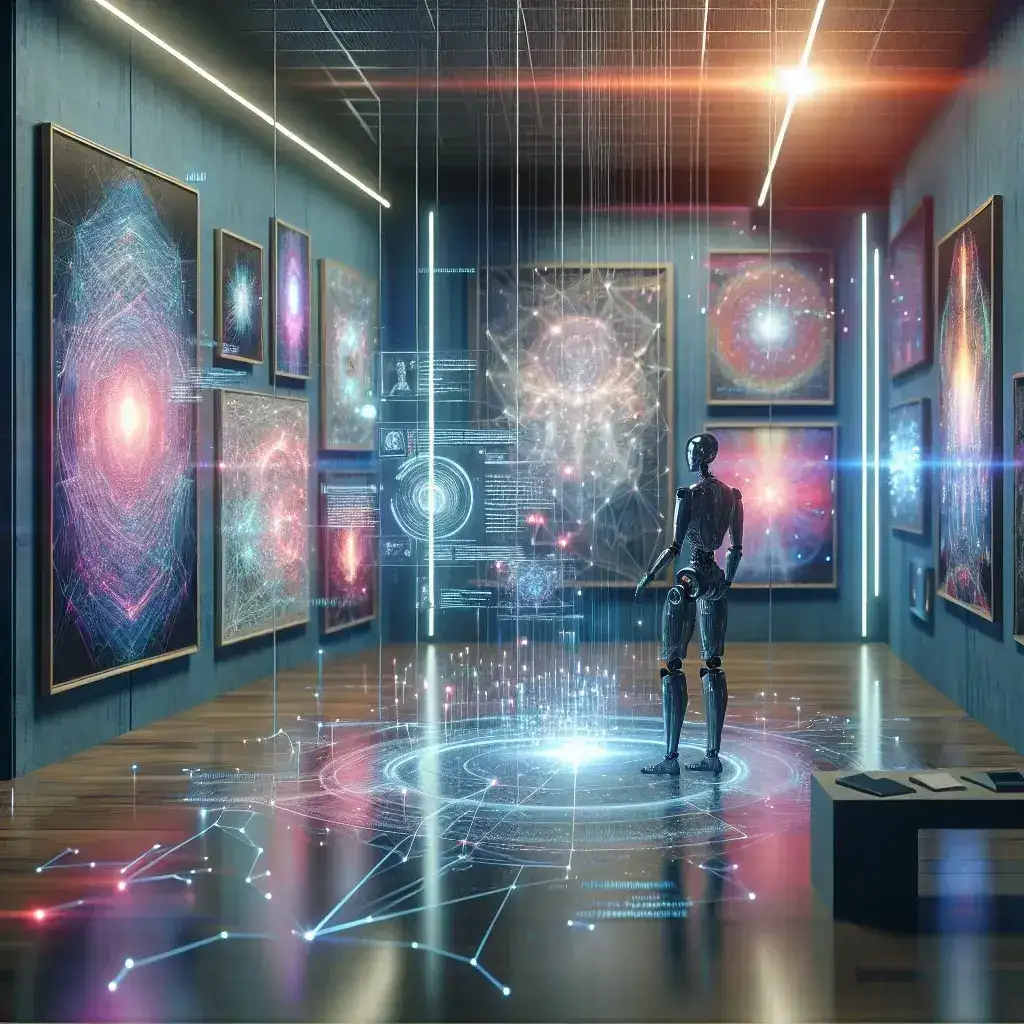Blur NFT Marketplace Tests AI Art Curation
The digital art world is undergoing a transformation, and the Blur NFT marketplace is leading the charge by exploring the potential of AI art curation. This innovative approach not only enhances the way digital art is presented but also redefines the relationship between artists, collectors, and the technology that facilitates their interactions. In this article, we will delve into the functionalities of the Blur NFT marketplace, the implications of AI in art curation, historical context, future predictions, pros and cons, and much more.
The Rise of NFTs and AI in Art
Non-fungible tokens (NFTs) have emerged as a groundbreaking technology in the art world, allowing artists to tokenize their work and sell it on digital platforms, which has democratized access to art for both creators and collectors. The introduction of artificial intelligence into this landscape has opened up new avenues for creative expression and curation.
Historical Context
To fully appreciate the impact of AI in the Blur NFT marketplace, it is important to understand the evolution of both NFTs and AI in the art sector. NFTs gained popularity around 2020, coinciding with the global pandemic, which drove many artists to seek online avenues for their work. Meanwhile, AI has been evolving for decades, with applications in various sectors, including art. Artists have begun to use AI tools for inspiration, and some have even created AI-generated artwork, prompting discussions about authorship and originality.
How Blur NFT Marketplace is Innovating
Blur is not just another NFT marketplace; it aims to enhance user experience by incorporating advanced AI algorithms that can curate art based on user preferences and market trends. These technologies assess data points such as user interaction, sales history, and even cultural relevance to present artworks that resonate with potential buyers.
Key Features of Blur’s AI Curation
- Personalized Recommendations: AI algorithms analyze user behavior to offer tailored suggestions, making it easier for collectors to discover new talent and artworks.
- Dynamic Pricing Models: By assessing market trends, AI can help artists and collectors determine optimal pricing, ensuring that artworks are fairly valued.
- Curation of Collections: AI can group artworks into cohesive collections based on themes, styles, or even emotional resonance, enhancing the viewing experience.
Pros and Cons of AI Art Curation
While the integration of AI into the Blur NFT marketplace presents exciting opportunities, it is essential to weigh the benefits against potential drawbacks.
Pros
- Enhanced Discovery: AI can help users navigate a vast array of artworks, making it easier to find pieces that align with their tastes.
- Efficiency: Automating curation processes saves time for both artists and collectors, allowing them to focus on creativity and investment, respectively.
- Global Reach: AI eliminates geographical barriers, enabling artists to reach a worldwide audience with their work.
Cons
- Loss of Human Touch: Some critics argue that AI curation lacks the emotional depth that human curators bring to the table.
- Over-Reliance on Algorithms: Heavy reliance on algorithms may lead to biases in recommendations, potentially overshadowing emerging artists.
- Ethical Concerns: The intersection of AI and art raises questions about originality, authorship, and creative integrity.
Future Predictions for AI in the NFT Space
Looking ahead, the role of AI in the NFT marketplace is poised to expand. As technology continues to evolve, we can expect more sophisticated algorithms that will not only enhance curation but also influence how art is created. For instance, collaborative projects between human artists and AI could yield new art forms that challenge traditional concepts of creativity.
Moreover, as awareness of AI-generated art grows, the Blur NFT marketplace may need to implement regulations to address ethical concerns, ensuring that artists are fairly compensated for their work and that buyers are informed about the nature of the art they are purchasing.
Real-World Examples of AI in Art
Several artists and projects have already begun to explore the synergy between AI and art. For instance, Refik Anadol utilizes AI to create stunning visual experiences that respond to data inputs, while projects like Artbreeder allow users to blend images using AI, resulting in unique and unexpected artwork.
Expert Opinions on AI Curation
Experts believe that AI’s ability to analyze large data sets can enhance art curation significantly. Samantha Lee, an art curator and technologist, remarked, “AI can act as an additional tool in the curation process, helping us unearth patterns and insights that might not be visible to the human eye.” However, she also cautioned against letting AI fully take over the human aspect of art appreciation.
Conclusion: Embracing the Future of Art
The Blur NFT marketplace’s test of AI art curation represents a significant step toward the future of the art world. By embracing technology, the marketplace is not only enhancing the art buying experience but also enabling artists to thrive in a competitive digital landscape. As we continue to explore the intersection of art and technology, it is crucial to remain mindful of the ethical implications and ensure that the human touch remains an integral part of the artistic process.
In summary, the integration of AI in the Blur NFT marketplace is not just a trend; it is a reflection of the evolving nature of art in a digital age. As both artists and collectors navigate this new terrain, the potential for innovation is limitless, paving the way for a vibrant future in the world of digital art.

Leave a Reply